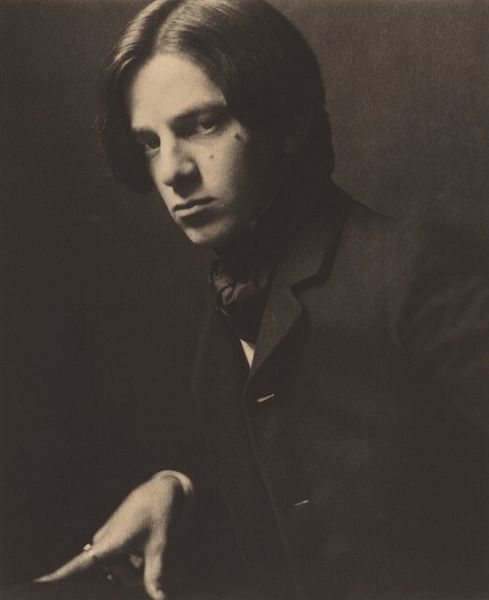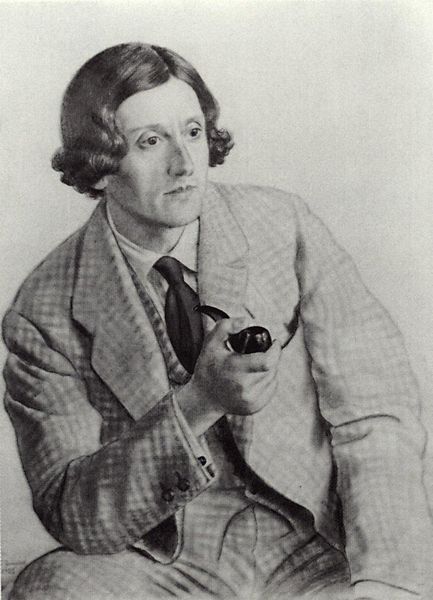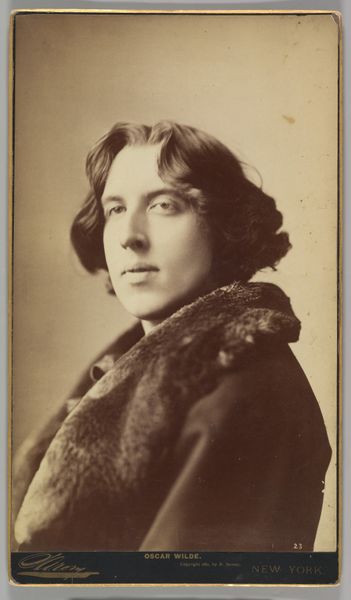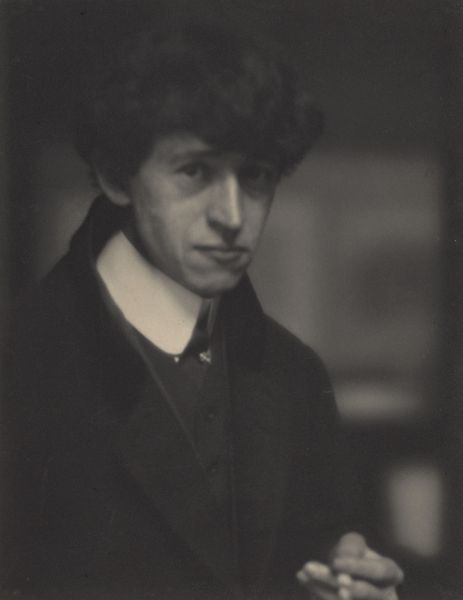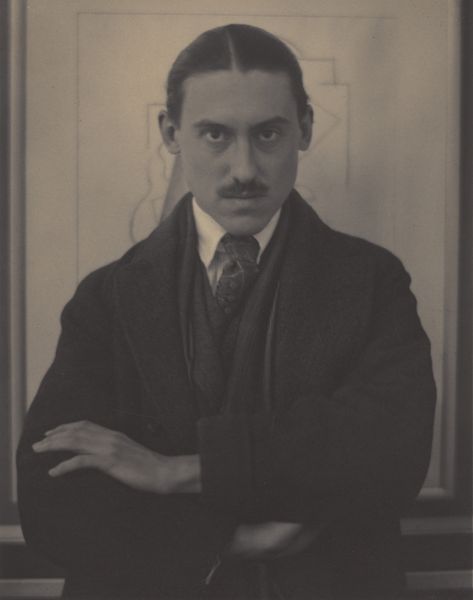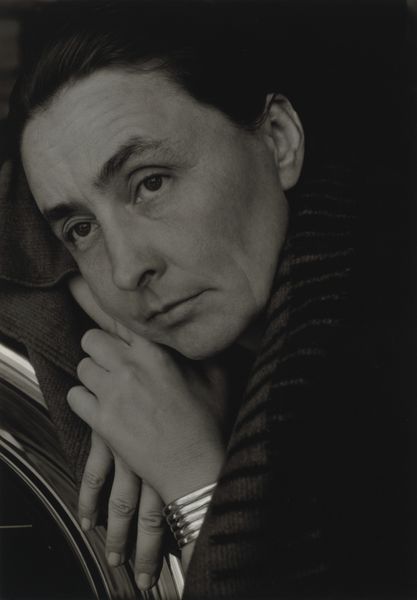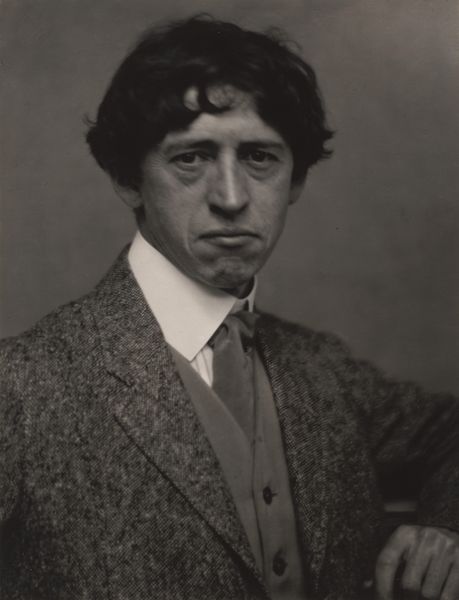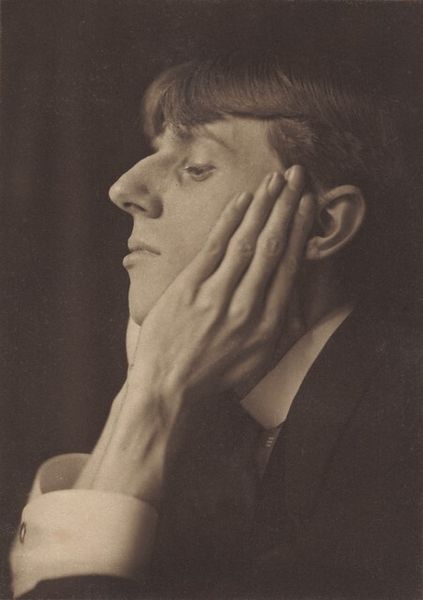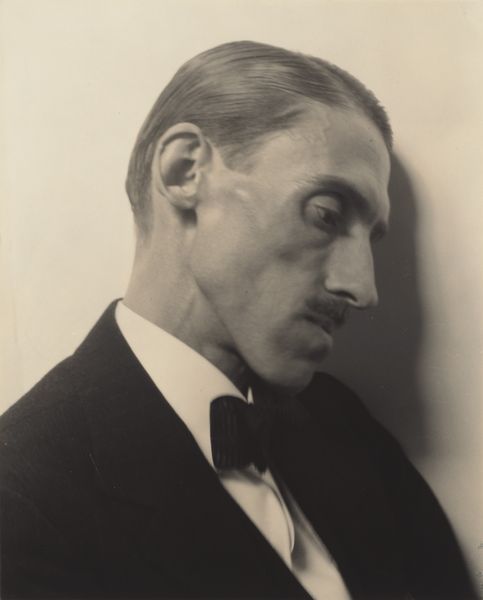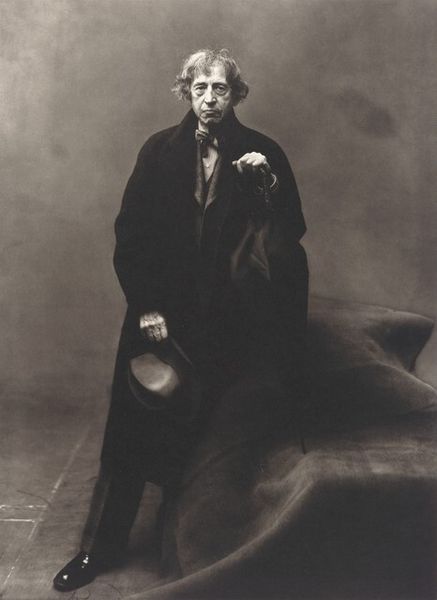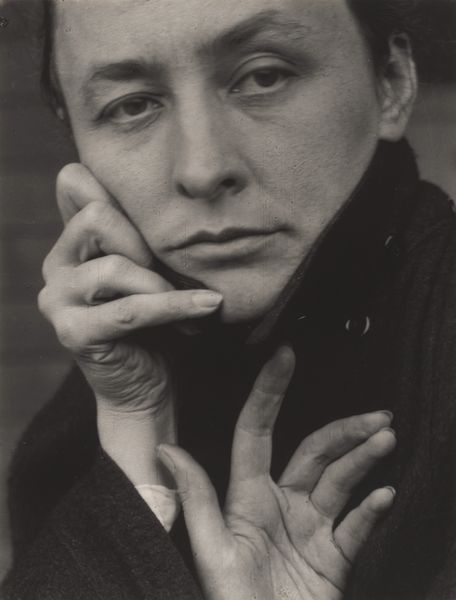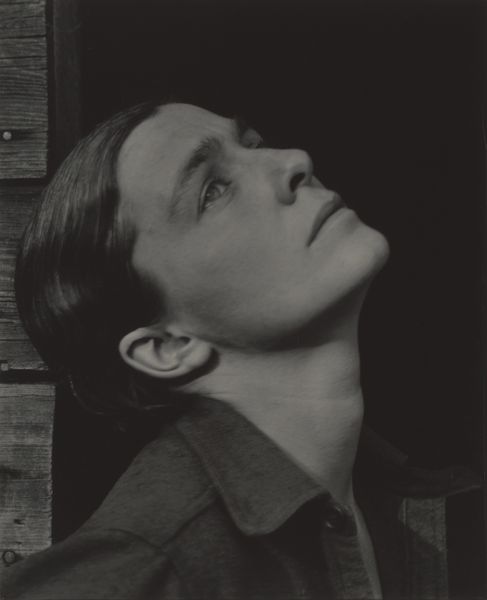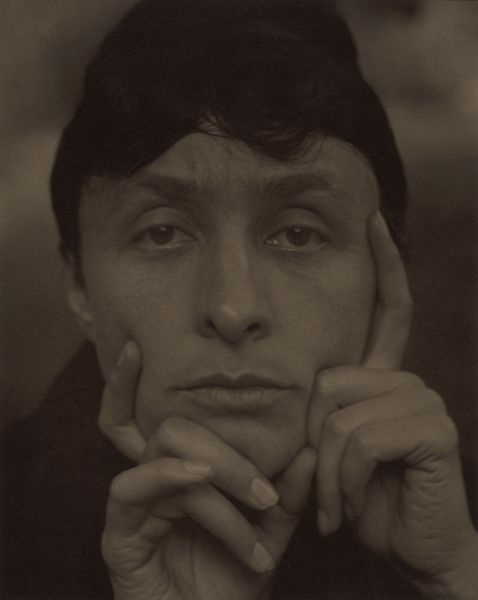
photography, gelatin-silver-print
#
portrait
#
black and white photography
#
portrait image
#
photography
#
historical photography
#
black and white
#
gelatin-silver-print
#
modernism
Dimensions: image (visible): 149.23 × 119.38 cm (58 3/4 × 47 in.) framed: 182.25 × 152.4 × 7.62 cm (71 3/4 × 60 × 3 in.)
Copyright: National Gallery of Art: CC0 1.0
Curator: This gelatin-silver print, titled "Oscar Wilde," was created by Hiroshi Sugimoto in 1999. Editor: It's striking. There’s a peculiar stillness to it. The somber palette and rigid pose lend it a kind of melancholy… like peering into a long-lost era. Curator: Indeed. Sugimoto is known for his series of wax museum portraits, capturing figures like Wilde through his large-format camera. It is modernist, referencing photographic methods from the late 19th century. He photographs subjects that are, essentially, already representations. Editor: So, it's a photograph of a wax figure *of* Oscar Wilde? It layers artifice upon artifice, right? Wilde, who constructed his own public image meticulously, is now rendered again. What are Sugimoto's views on gender and queer identity, and how do these play into Wilde's identity? The use of an antiquated photographic method—it subtly reinforces the sense of looking at a man trapped within the constraints of his era, both by societal expectations *and* now by Sugimoto. Curator: His conceptual framework probes the nature of photography itself. Sugimoto toys with representation and reality. Notice the lighting – how the stark contrast between light and shadow emphasizes the sculpture's features, but also flattens and almost idealizes them, too. There’s also an interesting interplay between depth and surface, particularly given that Sugimoto frequently explores time. Editor: I agree. Though I think that flatness adds to the sense of theatricality. The gaze avoids the viewer, almost as if the portrait, too, is participating in the spectacle. It calls attention to Wilde as a construction – both Wilde’s construction of himself *and* the construction of Wilde as a queer martyr figure over the past century. It’s like Sugimoto resurrects this dialogue of representation. Curator: And it invites contemplation on our engagement with history, and with images. Editor: It reminds us how photographs shape, cement, and occasionally distort our understanding of cultural figures, both of Wilde’s time and now.
Comments
No comments
Be the first to comment and join the conversation on the ultimate creative platform.
